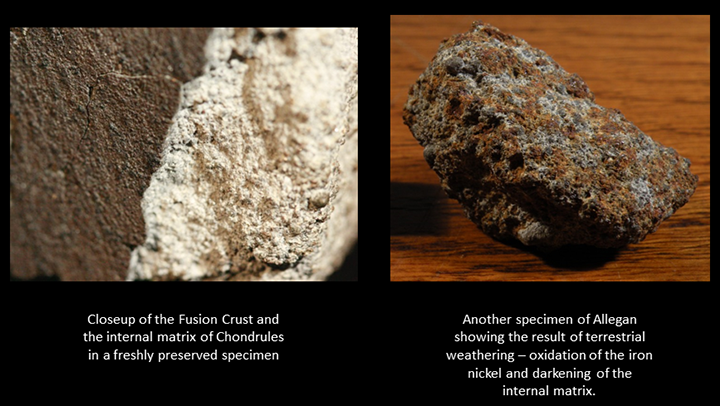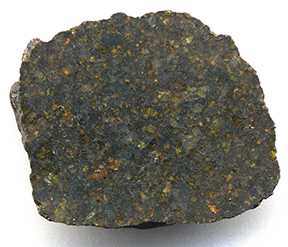This is the most common type of meteorite. Stony meteorites are made of rock, sometimes small bits of iron, and are formed from the outer crust of an asteroid or planet. They can look very similar to Earth rocks, so it takes expert eyes to find them! Stony meteorites that are new to Earth will have a black fusion crust, which forms as a result of burning during their flight. There are two types of stony meteorite: chondrites and achondrites.
Chondrites: These meteorites are made up of small blob-like grains of stone called chondrules. Chondrules form over billions of years from dust and mineral debris. Over time they begin to clump together into a larger mass. From the time of their formation to the time they fall to Earth these meteorites do not change. That means that they can tell us a lot about how the planets in our solar system were formed!

Achondrite: Unlike chondrites, achondrite meteorites do not contain chondrules. Instead, the minerals that make up this type of meteorite have been melted and changed over time. This melting most likely happened because of where they came from- large bodies with a lot of mass, such as large asteroids, the moon, or even other planets. The mass of these bodies made it possible to have a very hot, liquid molten core. By looking at the makeup of achondrites we can learn about how the bodies they came from were formed!

